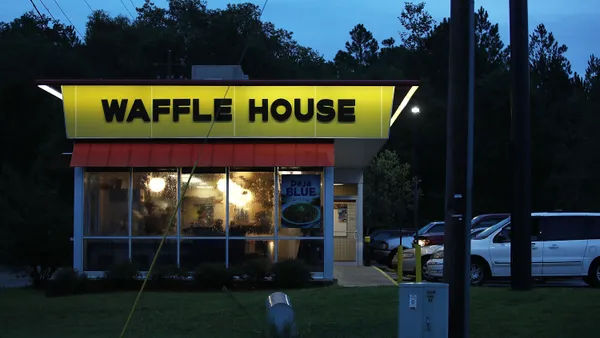Scott Absher is the co-founder and CEO of ShiftPixy.
Popular sandwich chain Jimmy John's has officially waged war against third-party delivery platforms via its new campaign, promising to never allow outside companies like Uber Eats, DoorDash or Grubhub to deliver its sandwiches. In a mission to provide only the best experience to its customers, the sandwich chain states they are faster, fresher and more consistent at delivery than third-party contenders.
At the same time, both Taco Bell and Dunkin’ have recently announced plans to expand their delivery services with Grubhub, an indicator that, while Jimmy John’s has completely ruled out third-parties, other restaurants are willing to forgo the risks associated with the platforms to cater to the delivery demands of their customers.
As the restaurant delivery industry grows more and more profitable, sales at the five largest delivery providers also rose a whopping 55% last year. However, the risks and challenges that Jimmy John's has addressed in its campaign, in addition to other factors, must be taken into consideration as restaurants devise their delivery strategies. Although third-parties offer operators a new-found sense of flexibility and convenience that directly managing a delivery workforce does not, restaurants should keep delivery in-house to ensure food quality, maintain their brand image and customer relationships and avoid hefty third-party fines.
Food quality
Jimmy John's is right in its assertion that third-party delivery services can't guarantee the same food quality and experience for the end customer that the restaurant itself can. As these platforms continue to grow in popularity, stories are emerging of drivers eating customers' food, arriving late to their delivery destination and consequently presenting cold food to the customer and — in some cases — not delivering the food at all. One Uber Eats user even reported receiving moldy sandwiches instead of the pizza she ordered from a local restaurant, at which she was once a loyal customer.
In large part, these mishaps can be attributed to the fact that third-party delivery drivers are being underpaid, with companies like Grubhub under fire for denying basic benefits and protections to its delivery workforce. Keeping this in mind, there is a heightened chance that restaurants outsourcing their delivery will unknowingly work with an unmotivated driver.
Brand image and customer relationship
The risks around food quality, delivery timing and overall negative experiences with third-party delivery drivers are harmful to restaurants' hard-earned brand image and customer relationships. A recent survey found that 35% of customers who use services like Uber Eats have experienced issues with their delivery, but about half of those customers place the blame on the restaurant itself.
In the crowded foodservice space, customer loyalty is critical. Even the most devoted diner can go from friend to foe after just one bad experience with a restaurant. For example, fast food chain Chick-fil-A prides itself on customer service by emphasizing its courteous environment, and has been named America’s favorite fast food restaurant as a result. However, when a brand like Chick-fil-A partners with a service like DoorDash, they sever their direct interaction with the customer, and hand over their coveted brand reputation to a third-party.
Third-party fees
In addition to the potential food quality and brand tarnishing risks that come with third-party platforms, they also impose unfavorable fees on restaurants, an industry that can hardly afford further hits to its already slim profit margins. Depending on which service a restaurant opts for, delivery fees can be as high as 35% of every order. As the labor pool tightens and food and rent costs increase, even the most prominent restaurants cannot welcome such added charges.
In ultimately choosing to outsource delivery, restaurant operators are often under the impression that despite the third-party fees, they are saving themselves the money and time it would take to directly hire and manage a delivery workforce. However, the negative impact that these services have on customer loyalty, and ultimately sales, makes keeping delivery in-house the clear choice.
For many operators, the flexibility and convenience associated with third-party delivery services cannot be overlooked, but for restaurants working to protect their brand at all costs, Jimmy Johns' decision to keep delivery in-house can be viewed as the more prudent choice. When brands partner with the likes of Uber Eats, DoorDash and Grubhub, they risk their food quality, sacrifice their brand image and customer relationship, and are subject to high, third-party delivery fees.












